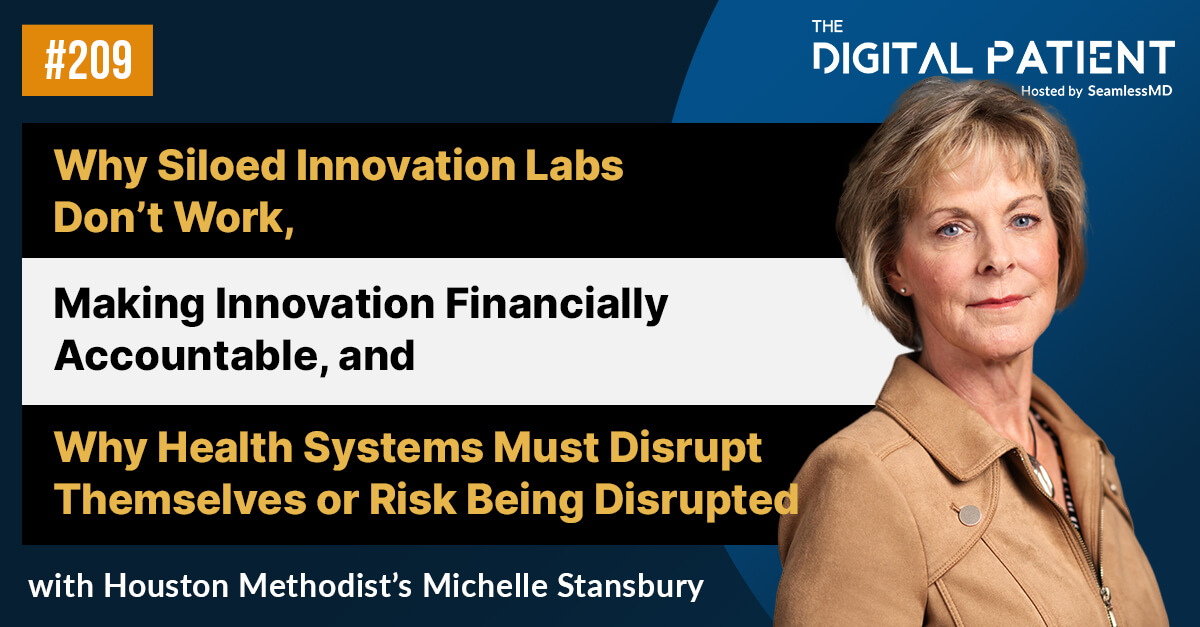Subscribe on: RSS | SPOTIFY | APPLE PODCAST | GOOGLE | BREAKER | ANCHOR
Video:
In this episode of the SeamlessMD Podcast, Dr. Joshua Liu, CEO at SeamlessMD & Marketing colleague, Alan Sardana, discuss How to Implement Surgical Remote Monitoring. See the full show notes below for details.
Guest(s): Dr. Joshua Liu (@joshuapliu), Co-founder & CEO at SeamlessMD
Episode 42 – Show notes:
Looking for the whitepaper mentioned in the podcast? Download the free whitepaper here to get a practical guide on "How to Implement Surgical Remote Monitoring".
[0:00] Why it’s important to thoroughly outline how to effectively implement and leverage Surgical Remote Monitoring to improve outcomes especially during COVID-19, as there are many steps involved before and after implementation;
[4:32] How Surgical Remote Monitoring:
- 1. Allows patients to transform their own devices into a virtual companion, guiding them from pre-op through post-op recovery by providing customizable evidence-based surgery specific pathways, ongoing education and self-care guidance;
- 2. Leads to improved outcomes such as reduced cancellations, length of stay, readmissions; and
- 3. Efficiently collects patient-reported outcome (PRO) data such as pain scores and anxiety scores for ongoing quality improvement;
[8:35] How to find the right technology partner that provides both the proven effective technology platform as well as high-quality professional services including:
- 1. Multiplatform accessibility and caregiver access;
- 2. Out-of-the-box, customizable, evidence-based care plans;
- 3. Robust dashboards and analytics tracking patient engagement and activity, PRO trends/graphs, and survey response rates;
- 4. Strong clinical evidence and customer references;
- 5. Electronic Health Record (EHR) integration;
- 6. Strong security & privacy infrastructure;
- 7. Exceptional implementation & ongoing advisory services;
[23:12] How to ensure you’re identifying the right priority use case(s) since the success of your initial surgical remote monitoring program will serve as a benchmark for the effectiveness of the technology as you scale, considering factors such as:
- 1. Availability of Clinical Champion;
- 2. Case Volume;
- 3. Risk-level of procedures;
- 4. Patient education needs;
[29:36] Why establishing your success criteria upfront will inform how to best implement the platform for your clinical workflow, which can include key success criteria such as:
- 1. Patient Engagement (adoption, usage);
- 2. Patient Self-Reported (satisfaction);
- 3. Hospital Chart Review (cancellations, LOS, ED visits, Readmissions, costs, phone call reductions, etc.);
[37:36] How building an effective team through stakeholder mapping can separate successful Surgical Remote Monitoring from a failed initiative, as well as the importance of defining their roles (e.g. project manager, physician champion, nursing and allied health, medical office assistant, IT analyst, etc.) and how they may change before, during and after implementation;
[44:28] How there are different workflows for enrolling and monitoring patients with varying degrees of provider involvement (e.g. hands off, hands on and supercharged);
[54:41] Why a successful Surgical Remote Monitoring program requires a thorough communication strategy for patients and the community, as well as for your providers and staff, with messaging that covers:
- 1. Why you are launching a Surgical Remote Monitoring initiative;
- 2. When it is starting;
- 3. Anticipated benefits for patients, families and the hospital;
- 4. Key stakeholder contacts to learn more;
[57:00] Why taking the time to establish processes for properly train staff members is important for the long term success of your Surgical Remote Monitoring initiative;
[59:30] Why it’s important to share patient testimonials and conduct frequent data review after Go-Live to continuously improve the provider workflow, technology and patient experience;
[1:03:07] How to achieve ongoing success after launch by leveraging aggregate PRO data for quality improvement, participating in user groups to collaborate, learn and disseminate best practices, and celebrating small wins!
Free resource from the podcast: Click here to download the whitepaper on How to Implement Surgical Remote Monitoring.
.svg)









.png)
